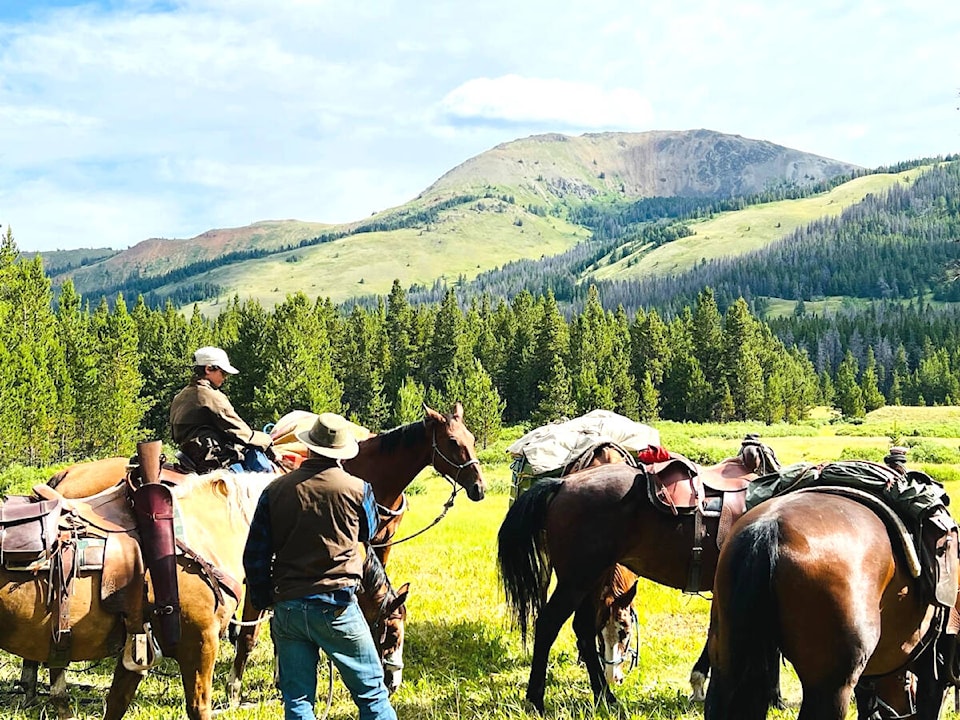In 2000, Hugh Brody published The Other Side of Eden: Hunter-Gatherers, Farmers and the Shaping of the World.
This is a book that puts together experience of and thinking about many of the fields of travel and anthropology that have been at the centre of Brody’s work. It looks at the relationship between culture and language, the way the agricultural way of life is at the core of the mythic ideas of human universality to be found in Genesis, and the way hunting cultures have been wrongly identified as nomadic – pointing out that it is agriculture, with its inherent tendency to produce surplus population and propensity for colonial expansion and warfare, that is the most mobile of ways of life.” (Google).
This quote sets the stage for this week’s musing. Recently, I had the privilege, for which I am eternally grateful, to join some Indigenous neighbours from the Lillooet region (St’at’imc, or Stl’atl’imx) for what was to be a joint celebration with the Tsilhqot’in (Chilcotin) in Graveyard Valley where in the early 2000s a peace agreement was reached between the two nations.
This was to be a dedication of a new plaque near the monument under a shelter to preserve it from the elements.
The event was a welcoming and inclusive sharing of healing experiences based on a reconnection with this Eden-like paradise where food had been traditionally gathered and hunted—accessed by foot and horseback in pre-settlement times.
Horse and foot trails (some mountain bike) traverse the many valleys and passes. Gang Ranch cattle used to summer there, but not for many years now.
“Sacred” is the most used word when Indigenous people describe this area. And sacred was the ceremony… Elders were given songs and experienced visions. One man saw his father riding into the valley on horseback reminiscent of his youthful adventures in Graveyard Valley hunting with his father.
A youth who had a fear of horses rode for the first time. For our part, four members (three generations) of our family were welcomed into the circle of friendship to share our love of this heavenly valley. It was our fourth trip there.
I had been ill over the Williams Lake Stampede weekend, but was healing enough to make the four-day journey. The younger generations thankfully did all the heavy work.
The pack trip, the ceremony, and Indigenous welcoming were spiritually uplifting. This place was painted with alpine flowers and the views of the meadows make one think of Paradise on Earth.
Indian paint brushes coloured the hills, like a painter’s palette. Some were light yellow and white, tinging on green, some brighter yellow, shades of orange and red, and a few bright fuchsia and darker purple.
When we arrived at the site of the ceremony (the graveyard of brave warriors who died in the last battle) we came upon a scene out of the past - twenty horses peacefully grazing on the flat.
The human/horse connection is a beautiful wonder in mankind’s evolution. This connection was one of the backdrops of this adventure.
My gentle horse, Lady, was a quiet ride in this paradise on earth where people were struggling to find peace and hope in the community, putting the tragedies of the past behind, and sharing a path into the future and a life beyond.
Mankind’s struggle to feed itself and keep families and tribes safe has led to nomadic ventures which often have undone the natural beauty and bounty in the name of progress and settlement.
It is one thing to bring our livestock to new areas of abundance to feed ourselves, it is quite another thing to settle and pass through and keep the natural wealth that attracted us here and there.
We have been charged with stewarding the earth, not exploiting it beyond recognition.
monica.lamb-yorski@wltribune.com
Like us on Facebook and follow us on Twitter
